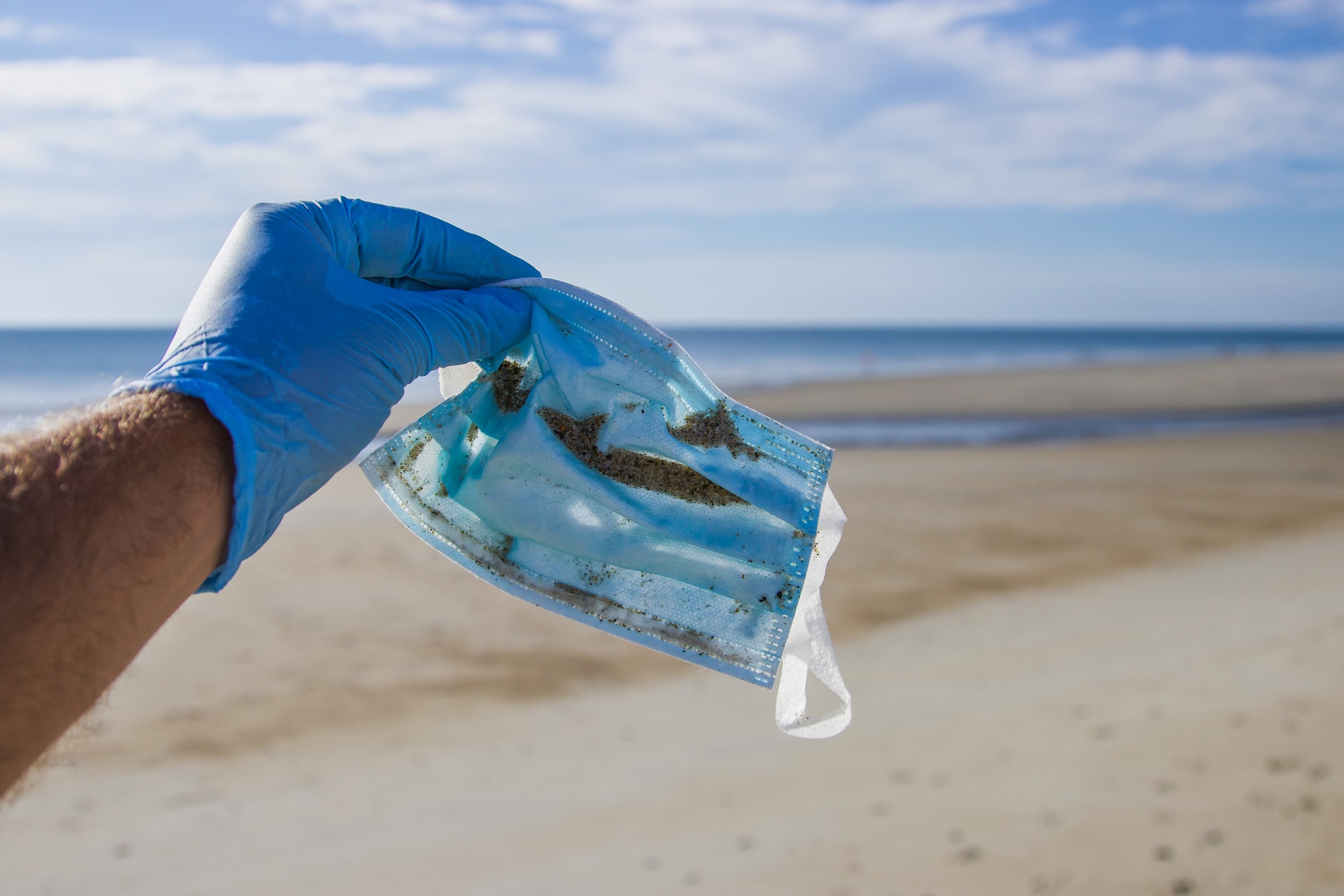The fight against single-use plastic consumption has never been harder than in the past two years. With the spread of the Covid-19 pandemic, the (human) world's hunger for plastic has transformed from unconscious addiction to unavoidable necessity.
Durable, lightweight, inexpensive, and hygienic, plastics have always been the best option for disposable medical and personal protective equipment, known as PPE – masks, gloves, and face shields. Their use, at first very limited, has obviously grown exponentially during the health emergency, so much so that, globally, more than 8 million tons of plastic waste related to the pandemic have already been generated. This has been calculated by a study just published by PNAS (Proceedings of the National Academy of Sciences of the USA), which launches a new alarm for the ocean: of all the plastic generated by the pandemic, 26 thousand tons have already ended up in the ocean.
The single-use plastic pandemic
The study, authored by researchers from Nanjing University in collaboration with the University of California, clearly demonstrates how the Covid-19 emergency has exponentially increased demand for single-use plastics, worsening an already out-of-control problem. The team of researchers, led by Nanjing's Yiming Peng and Peipei Wu, calculated that by August 23, 2021, 8.4 million tons of pandemic-related plastic waste had been generated in 193 countries, of which about 26 thousand tons would end up in the ocean.
According to estimates, the bulk of this waste production comes from hospitals (73%), but in the account the research also included the increase in packaging due to the surge in online commerce recorded during the various lockdowns around the world.
From hospitals to oceans, via river
The fundamental problem – the researchers explain – is that the disposal and treatment of this waste does not keep pace with the abnormal growth of its production. This happens especially in those countries that, although less affected by the virus, already had issues with the management of plastic flows. This is demonstrated by a comparison of data: out of the 212 million cases of Covid-19 confirmed at the end of August, the highest percentage (47.6%) was in the American continent, about 31% in Asia and 17% in Europe, but 46% of mismanaged plastic waste, that ended up in the environment, comes from Asia, followed by Europe with 24% and North and South America with 22%. The high percentage of waste coming from Asian countries is also due to the massive use of face masks by the population, a habit already widespread before Covid especially in large (and polluted) metropolises. Globally, however, the bulk of single-use plastics dispersed into the environment comes from hospitals.
"This poses a serious long-term problem for marine ecosystems," the researchers write. Since the start of the pandemic, thousands of tons of masks, gloves, face shields and Covid-test kits have ended up in the world's 369 largest river systems and from there into the oceans. The three major rivers that have so far accumulated and transported the largest amount of Covid-related plastic waste are located in Asia and are the Shatt al Arab (5200 tons), the Indus (4000 tons) and the Yangtze (3700 tons). This is followed by the river system formed by the Ganges and Brahmaputra (2400 tons) and a European river, the Danube, which has so far transported 1700 tons of plastic waste generated by the pandemic. Globally, 73% of the load of this waste that ends up in the sea is carried by the major waterways of Asia.
From the health emergency to the single-use plastic emergency
If it is true that the pandemic emergency is at least partially over, the emergency related to the plastic used for sanitary devices isn’t, and won’t be any time soon. The measures of protection and containment, as is easily predictable, will still go on for quite some time. Researchers in Nanjing and San Diego have made some predictions about this: by the end of 2021, they write, confirmed Covid-19 cases will reach at least 280 million and the total amount of mismanaged plastic waste will reach 11 million tons, of which 34 thousand will be dumped from rivers into the ocean. These are conservative estimates, the study's authors warn: for example, with regard to the consumption of face masks, the numbers considered are significantly lower than in another study published last July.
In any case, the matter can no longer be ignored, given that, in addition to the usual and now well-known problems of pollution, this type of sanitary waste brings new health risks, including the possible further spread of the SARS-Cov2 virus through water systems.
It's time to start worrying about how to manage the single-use plastic pandemic as well.



